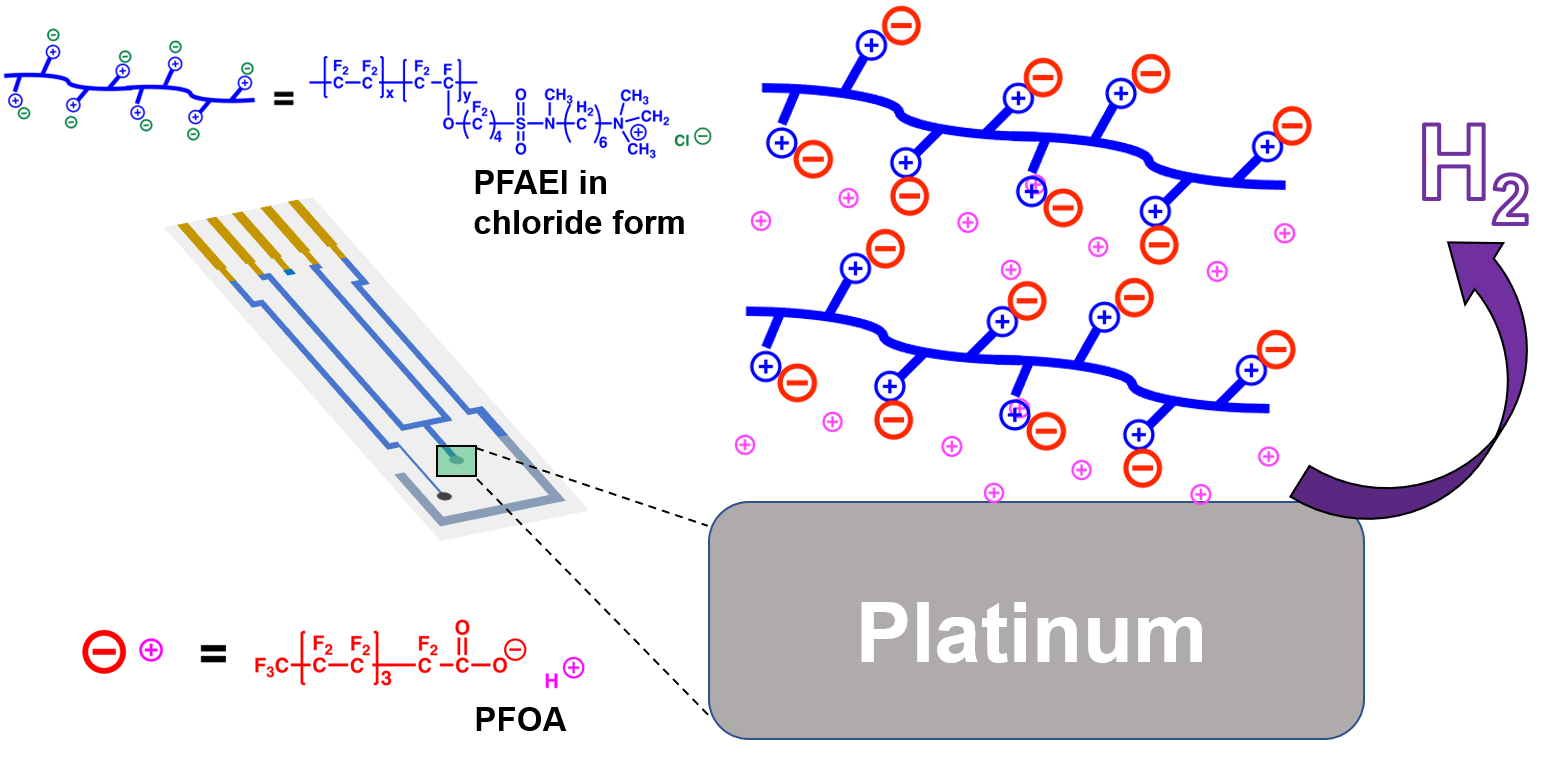LSU Mechanical Engineering Professor Designs Toxic Chemical Sensor
 April 24, 2024
April 24, 2024
BATON ROUGE, LA – LSU Mechanical Engineering Associate Professor Manas Gartia is leading a team of researchers in designing a novel electrochemical sensor that will detect toxic chemicals in the environment. This sensor will help with environmental research, public health testing, and PFAS containment and alarm system.
“Perfluoroalkyl and polyfluoroalkyl substances (PFAS), also known as ‘forever chemicals,’ are toxic chemicals found nearly everywhere on Earth and are a threat to public health,” Gartia said. “To address this problem, my team has created a novel electrochemical sensor that is portable, economical, and can rapidly detect PFAS in the environment.”
The sensor is made of a working electrode, counter electrode, and can include a reference electrode. The working electrode is comprised of a metal or metal alloy in the form of nanoparticles, wire, or nanoscale electrocatalysts such as platinum. A perfluorinated anion exchange isomer film is located within the working electrode, which may be screen printed on many surfaces such as ceramic, glass, quartz, polymers, or hydrogel substrates.
“Experimental results show these sensors do not need redox probes and have a limit of detection (LOD) less than or equal to 7 ppb in buffered or drinking water,” Gartia said.
Benefits of the novel sensor include fast results, LOD lower than tradition methods, not requiring redox-active probes (making the sensor more convenient and transportable), and the nanoscale electrocatalysts sensors have large operating temperature range (-40-300°C).
Gartia's technology, which has a patent pending, received assistance from LSU's Office of Innovation & Technology Commercialization (ITC). Helping Gartia on the project are his previous postdoc student Sushant Sahu and former LSU Chemical Engineering Associate Professor Chris Arges.
About LSU ITC
LSU ITC protects and commercializes LSU’s intellectual property. The office focuses on transferring early-stage inventions and works into the marketplace for the greater benefit of society. ITC also handles federal invention reporting, which allows LSU to receive hundreds of millions of dollars each year in federally funded research, and processes confidentiality agreements, material transfer agreements, and other agreements related to intellectual property.
Like us on Facebook (@lsuengineering) or follow us on X (formerly Twitter) and Instagram (@lsuengineering).
###
Contact: Libby Haydel
Communications Manager
225-578-4840
ehaydel1@lsu.edu
Latest College of Engineering News
- Civil Engineering Student Callender Showcases Work at ACI ConferenceMay 1, 2024BATON ROUGE, LA - Andrew Callender, a senior in civil engineering from Baton Rouge, recently presented his research group's work on producing low-carbon concrete using Louisiana-sourced materials at the American Concrete Institute's (ACI) conference in New Orleans.
- Computer Science PhD Student First to Receive Competitive AwardApril 25, 2024BATON ROUGE, LA - LSU Computer Science Ph.D. student Ruxin Wang is the recipient of the highly competitive 2024 Cyber-Physical Systems (CPS) Rising Stars Award, making her the first-ever LSU student to receive the honor. She is also the first female LSU student to publish a first-author security paper at one of the Big 4 Security conferences.
- Wang Receives NSF CAREER Award, Research Addresses Privacy Concerns in VideoconferencingApril 18, 2024BATON ROUGE, LA - Since the pandemic, our primary means of interacting have evolved to include video conferencing applications, which are broadly used to connect geographically distant people for work, school, and even socially. During these interactions, it's not uncommon for a user to turn off his or her microphone and/or camera out of concern for privacy. However, microphones and cameras can still leak other kinds of information beyond what is seen and heard through "micro signals," which are too tiny for humans to recognize but detectable by machines.
- LSU Civil, Environmental Engineering Researchers Study Coastal Wetland Root DynamicsApril 16, 2024BATON ROUGE, LA - A team of LSU researchers led by LSU Civil and Environmental Engineering Associate Professor Navid Jafari (principal investigator) and LSU CEE Research Assistant Mohamed Hassan (co-PI) recently received a $50,000 National Science Foundation I-Corps grant to commercialize its algorithms in studying root productivity in Louisiana wetlands. A second grant was awarded by the Environmental Molecular Sciences Laboratory (EMSL), which is part of the Pacific Northwest National Laboratory in Richland, Wash., that allows the team to use X-ray computed tomography (XCT) and optical coherence tomography (OCT) scans to study these roots.
- LSU, Delaware and Johns Hopkins Researchers Examine the Mechanics of the Human BrainApril 4, 2024BATON ROUGE, LA - Faculty from LSU, the University of Delaware, and Johns Hopkins University are collaborating on a project that may help us better understand how fast or slow mechanical forces deform the brain during events such as falls and car crashes. Having this understanding is critical to developing computer models for predicting brain injury, as well as designing safer personal protective equipment and brain injury management and prevention strategies.
- LSU Mechanical Engineering Professor Researches Biodegradable, Metal-Free BatteriesApril 1, 2024BATON ROUGE, LA - Each year, Americans throw away more than 3 billion batteries, creating 180,000 tons of hazardous waste. Imagine how many more are discarded throughout the world. Thanks to a $50,000 grant, LSU Mechanical Engineering Associate Professor Ying Wang is exploring biodegradable, metal-free batteries that will be more sustainable in the medical field and less harmful on the environment.


